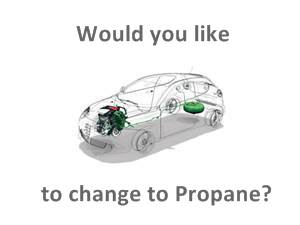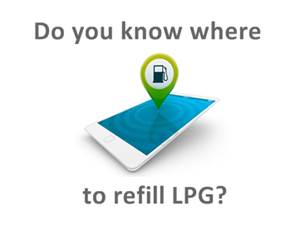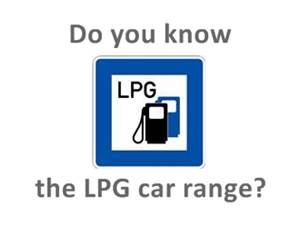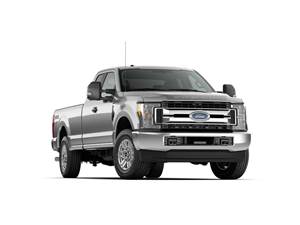
New ford range of cars, suvs, wagons, sedans, trucks prepared to consume LPG / Propane
Ford's name is inevitably linked to that of the automobile. A more than deserved detail of having been Henry Ford the pioneer in vehicle manufacturing. A milestone made with its legendary Ford T, the first car at a good price produced on a large scale. Thanks to this, Ford's history is linked to that of the automobile. One is not understood without the other.
In 2006, the Ford family controls about 5% of the company's shares and has a voting right of almost 40% through special shares. In December 2006, Ford announced that it would mortgage all its assets, including production facilities, equipment, offices and intellectual property (patents and trademark rights), to raise $ 23.4 billion, which Ford has not done since 100 years. of history. With this measure, they wanted to return to benefits after a few years. In 2008, it produced a total of 5,532 million automobiles and had 213,000 employees in around 90 manufacturing facilities worldwide.
A new Ford LPG / Propane Model of van in USA usually maintains the same gasoline system as the traditional version incorporating the LPG / Propane equipment
the Ford LPG / Propane van has a price slightly higher than the gasoline version but lower than the diesel version
Although it can be established that operating in LPG / Propane mode the vehicle consumes a little more than gasoline, the price of fuel has an interesting saving
The refilling from the supplier is carried out in a time comparable to that necessary for refueling gasoline. The system is, likewise, very simple and comfortable.
Being a cleaner system, catalytic converters, filters, "adblues" are eliminated, which reduces the possibility of mechanical breakdowns. Thus, for example, the service life of the oil increases with what it means for motor care
The first cities begin to limit the access of diesel vehicles, in their restrictive regulations vehicles with LPG have access advantages
Cars with the possibility of being adapted to consume LPG / Propane

B-Max

C-Max

Ecosport

Fiesta

Galaxy

Ka+

Kuga

Mondeo

S-Max

Tourneo




Ford is expected to consolidate its dominant position in the auto-LPG engine industry with the introduction of advanced liquid injection during the year. The company used the second version of the annual LPG report card in Australia to announce a technological revision of its 4.0-liter E-Gas to six of the same order of magnitude as the last year's SIDI (Direct Injection Direct) update. The update is part of an investment of 230 million dollars for the modernization and greening of the company's range of Australian products. As previously reported by the Carsales Network, the strategy will also see the Falcon equipped with Ecoboost 4 years-end or early 2011, and the extended range of Territory engines to include a turbodiesel option. For the past ten years, Ford has claimed installed for itself a local LPG segment factory. This is the only three competitors in the large car industry - Holden, Ford and Toyota - to mount dedicated LPG systems factory. While the Toyota and Holden Commodore models offer Hi Ace, respectively, with factory-approved systems, these are bi-fuel replacement assemblies that are bolted to the finished product. Ford's strategy has paid off over the years. Since 1999, the company has sold over 100,000 factory-produced LPG vehicles. More than 56,000 of them were cars, far exceeding the number of competitors. It can not therefore be surprising that the blue oval is the first to undertake the injection of advanced liquid LPG. The new system benefits from Ford's dominance in the industry. Having the ability to choose between competing technologies offered by local manufacturers, has developed a system that combines the power components and orbital injection manufacturer WA with an alternative fuel tank company based in Melbourne. During the announcement, the managing director of Ford Australia, Marin Burela told CN that the move is the result of an important strategic direction that differentiates the company from Holden and Toyota. "Some manufacturers have turned to foreign markets to strengthen their local positions, while we have focused on the competitiveness and sustainability of our internal market." Australia has one of the strongest reasons for all countries in the world to follow the path of LPG, with abundant supplies and a well-established distribution of retail infrastructure on most of our continent. About 3200 of our service stations - almost 50% - have LPG pumps. Although it is likely to never find the parity in terms of fuel efficiency due to a significant difference in energy density, liquid injection has the potential to significantly reduce the gap between LPG and gasoline. Using a dedicated engine from Ford manages the potentials better than most thanks to the optimization of LPG, mainly by increasing the compression ratio of some points. This has long been a major LPG bug status as a "poor cousin" of the essence. Most LPG conversions are limited to bi-bolted systems using LPG as an adjunct to ULP, making them capable of performing most of the octane content of 103 to 107 LPG and different envelope combustion. That LPG lack of energy density against ULP does not do it in other ways, making it very profitable - enough to warrant almost universal use in the national taxi fleet. There is enough land around us to supply the world for several hundred years at current levels of use, and, still not taxed on the turf at home, it has a considerable advantage over petrol and diesel.
Lpg-PFDI conversion systems are available for the 2018 Ford F-150 with a 3.3-liter V8 or 5.0-liter V8 engine
For the first time in the United States, fuel injection injection injection technology (PFI) powered by gpl autogas is a viable solution. While more fleets are moving towards direct fuel injection engines, the Alliance AutoGas (AAG) has found a solution for those who want to reduce their emissions and use gpl autogas inexpensive.
AAG has successfully engineered PFDI conversion systems for the Ford F-150 2018 in two engine choices: a 3.3-liter V6 and a 5.0-liter V8. This new technology presents the autogas as the primary fuel, while it strategically uses petrol as a lubricant for combustion. At the Work Truck 2018 in Indianapolis this week, AAG is displaying two vehicles with the new Propane-PFDI (P-PFDI) technology that offers participants the opportunity to view the new autogas system.
AAG engineers expect the P-PFDI engine to continue growing within the larger vehicle markets. "We plan to prepare for the advancement of OEM technology with the complementary propane-to-propane conversion technology," said Ed Hoffman, President of Blossman Services, Inc. "Autogas propane is the most popular alternative fuel in the world. , proven in over 28 million vehicles and we must always be ready to meet the demand for fleets throughout the country ". Stephen Holland, director of engineering for Blossman Services, Inc., explained that his team noticed a major change in OEM technology several years ago when manufacturers started to implement PFDI engines on small cars. Holland said: "PFDI is quite a complicated technology, and we knew it was just a matter of time before PFDI became widespread, including implementation in large trucks, so it was important for us to start designing a gas autogas solution quickly. ". Holland continued: "We were prepared with a conversion system as soon as Ford introduced the first PFDI shopping cart.We know that the PFDI will continue to grow and we will be ready for the next vehicle class as soon as they enter the market." The engineered P-PFDI conversion system specific to the AAG platform allows fleets to use autogas and enjoy the best performance with the following features and benefits:
Reliability: the new Autogas PFDI system allows performance fleets to depend on extreme weather conditions. There are no cold start problems or heat complications. Reduction of emissions: Autogas' PFAI technology drastically reduces exhaust emissions, including in particular CO₂, CO and NOx. "The 3.3-liter engine exhaust emissions put this vehicle in the same emissions class as a Hyundai Elantra or Subaru Outback.The 5.0-liter engine is in the same emissions class as the Chevy Volt and Toyota Yaris", declared the Netherlands. Range: "This P-PFDI system eliminates the range anxiety that can result from other alternative fuels.The P-PFDI system maintains the same range of petrol to keep vehicles on the road, regardless of where it comes," said Hoffman . Proven OE Hardware: The P-PFDI conversion system is an adaptation of the proven AAG technology currently used on over 100,000 vehicles worldwide with proven success. Support: AAG offers a 5-year warranty in the industry, 100,000 miles supported by a nationally trained service network.








